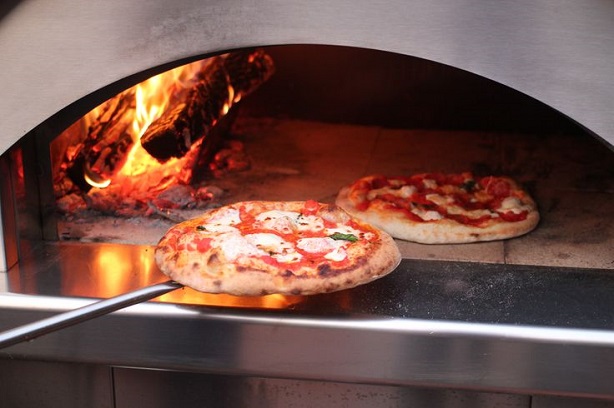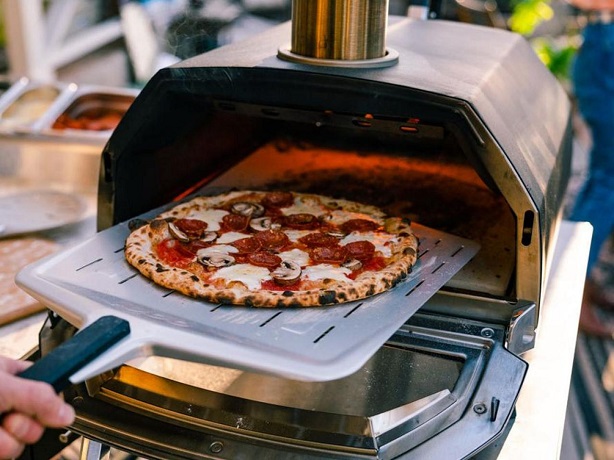Wood Fired vs Gas Pizza Ovens: Which One Should You Get?
If you love pizza, then owning an oven designed for pizza cooking will make a world difference. Why spend extra money on ordering when you can make it yourself at home? However, with such a wide array of wood fire and gas pizza cookers, it might be a bit difficult to decide which one to buy.
Many people ask “Is wood or gas better for a pizza oven? There is no right or wrong choice. It’s mostly down to personal preferences. Both types of ovens have their own benefits and learning about their advantages is a good starting point to help you decide which works better for your needs. You can find authentic Italian-produced pizza ovens Australia-wide to help you bring the taste of Italian pizzas to your home.
Fired Wood or Gas Pizza Oven: Which One Should You Choose?
Both types of ovens offer a range of advantages that make them a good choice for outdoor cooking enthusiasts. Regarding function, both wood fired and gas ovens will work pretty much the same – generating high and intense heat in the chamber.
When it comes to the flavour of the pizza, convenience of use of the oven and temperature control, that’s where the differences show up. This might be a determining factor to help you choose one or the other. Whichever you decide to choose, there is a wide selection of pizza ovens Australia-wide so you’re bound to find something that works for you.
Whatever type you decide to choose, a pizza oven is always a great conversation starter and a gathering point for you and your loved ones. You’re guaranteed to have some quality time with your close friends and family spent in a cosy atmosphere spiced up with a delicious meal.
Advantages of Wood Fired Pizza Oven

Faster Cooking
Wood fired ovens are known to produce intense and high heat which allows the pizza to be cooked in a relatively short time. The temperatures produced inside the chamber can reach up to 500°C, so you can expect the pizza to be ready in just a few minutes.
This feature of wood fired ovens makes them a top choice among professionals for commercial settings where they have hundreds of pizza orders daily. However, remember that the oven needs a little time for the fire to start working. But once it hits the right temperature, expect a perfectly crisp crust in no time.
Authentic Flavour
Pizza flavour – although for some this might be the biggest and crucial reason to get a wood fired oven, there are still some nuances around it. Yes, cooking pizza in a wooden chamber hits differently. The crust has a distinctively delicious taste, that resembles the pizza flavour of traditional Italian pizzerias. The high temperature generated by the burning wood infuses a smoky flavour to the crust and this is what enhances the flavour of the pizza.
But what it’s a frequent occurrence with wood fired ovens is that at such high temperatures, the smoke produced by the burning wood doesn’t have time to actually come into contact with the pizza itself. So cooking a pizza in a wooden chamber does not always guarantee that smoky taste, making the crust so delicious. However, the burning wood will still add a flair and certain flavour to the pizza.
Even Heat Distribution
The good thing about wood fired ovens is they are pretty effective at providing even heat distribution throughout the chamber. This ensures that the pizza is cooked uniformly – meaning, no hot or cold spots in the oven, which results in a consistently delicious result.
Sustainable Cooking
Resorting to wood fired pizza ovens is a sustainable alternative to traditional electric ovens. Cooking with wood reduces the carbon emissions that typically come with other types of cookers. These models minimise the reliance on fossil fuels and electricity, help you reduce your energy bills and enjoy a delicious meal without an environmental impact.
Advantages of Gas Pizza Oven

Convenient
Convenience is one of the most prominent advantages of gas ovens for pizza cooking. They are relatively smaller than their wood fired counterparts which makes them extremely space-efficient since you can place them anywhere. You don’t need to worry about not having enough space in your yard or your house to use and store the oven.
They are also time efficient. Gas ovens hit up pretty quickly since there is no need for the fire to start working. You don’t need to wait for the oven to hit the right temperature to start cooking the pizza. This is what makes them a suitable choice for people who live a busy life and also for weeknights or gatherings where you want to enjoy a delicious meal without the hassle of wood fire. Additionally, gas ovens are pretty easy to clean and maintain.
Precise Temperature Control
With gas pizza ovens, you have the flexibility to adjust the temperature to the desired levels. This feature ensures precise temperature control to help you achieve optimal cooking results. Whether you want to lower the temperature for a slower cooking or increase the hit for a faster bake, you can do so with just a simple with just a simple switch of the knob.
Consistent Heat Distribution
Once you set the desired temperature of the gas oven, you can relax and not worry about needing to constantly monitor the heat levels and help the oven maintain the optimal temperature. Gas ovens provide consistent heat distribution throughout the cooking chamber during the cooking time, without fluctuations in the temperatures.
Easy to Use
The most convenient thing about gas ovens is that everyone can use them. Whether you’re just a beginner or an experienced cooker, the intuitive design and minimal maintenance requirements allow you to cook delicious pizzas with ease. When it comes to gas ovens, all you need to do is turn a knob and wait for the oven to reach the desired temperature.






